![]()
Sold Specimens,
Agates
Galleries
of Sold Specimens:
A
B C D E F G H I
J K L M N O P Q R S T
U V W
XY
Z
Agates Sold Calcites Sold Mont St-Hilaire Sold
![]()

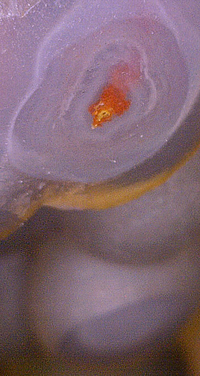
click
on images for larger views
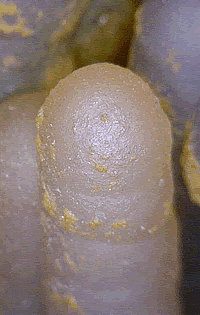
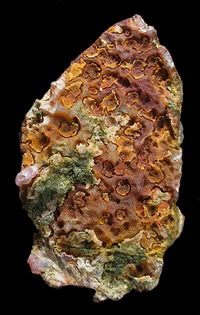
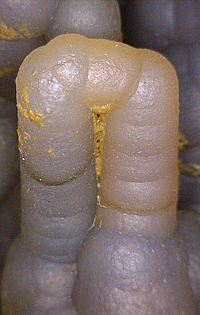
click on images
for larger views
AG11-32 "Cathedral" Agate ex Al Rose $395 SOLD
San Carlos, Mun. de Manuel Benavides, Chihuahua, Mexico
14 cm x 8 cm x 5 cm
This type of agate, almost impossible to find today, was nearly always cut into cross-sections that resembled cathedrals, hence the popular name, "Cathedral" Agate. It is extrememly unusual to find one that has not been sliced. The biggest knob has been polished to show the red core within the lavender agate, as can be seen in the upper-right closeup. The backside (center photo, bottom row) resembles a moonscape of wine-red and green craters. The individual stalactites have a lot of character, including one (lower right photo) that doubles back on itself.
![]()
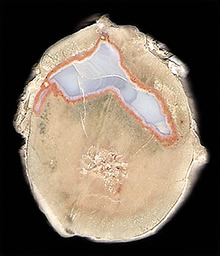
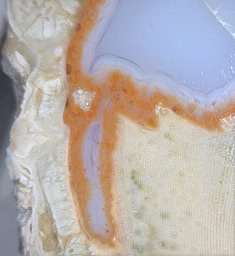
click on images
for larger views
QA11-1
Thunderegg (Agate in Rhyolite) $20
SOLD
collected by Jeffrey Anderson
Mont Lyall, Sainte-Anne-des-Monts, Gaspésie-Îles-de-la-Madeleine, Québec, Canada
4.5 cm x 3.7 cm x 2.1 cm
This Thunderegg was collected by Jeffrey Anderson, one of the Agate collectors featured in the large format Agates II book by Johann Zenz. It is certainly different in coloration from most others.
![]()
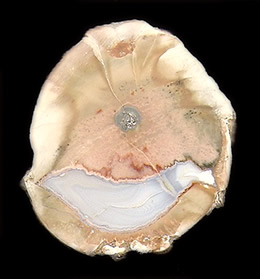
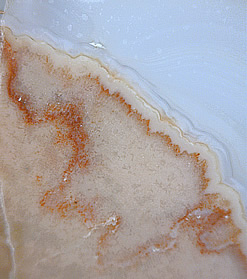
click on images
for larger views
QA11-3
Thunderegg (Agate in Rhyolite) $18
SOLD
collected by Jeffrey Anderson
Mont Lyall, Sainte-Anne-des-Monts, Gaspésie-Îles-de-la-Madeleine, Québec, Canada
4.9 cm x 4.1 cm x 1.9 cm
Jeffrey Anderson writes that Thundereggs from Mont Lyall "may be the most eastern thundereggs found in North America so far."
![]()


click on images
for larger views
AG11-1 Agate ex J. Höppner with label $22 SOLD
Lierbach valley, Oppenau, Oberkirch, Black Forest, Baden-Württemberg, Germany
6 cm x 5.2 cm x 2.6 cm
A red agate cross-section resembling a fish in a nodule composed of an agate-clay mixture. One of the interesting features of this specimen is the fine parallel lines that look like fingerprints.
![]()
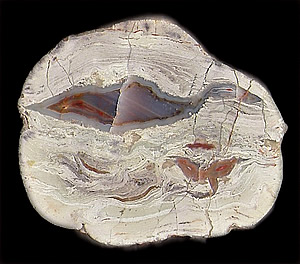
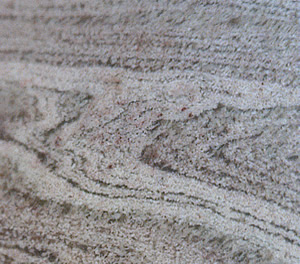
click on images
for larger views
AG11-12 Agate ex J. Höppner with label $22 SOLD
Lierbach valley, Oppenau, Oberkirch, Black Forest, Baden-Württemberg, Germany
5.5 cm x 4.7 cm x 2.2 cm
In
contrast to the one above, this agate looks like a duck, and a closeup
of the rind looks like wood grain.
![]()
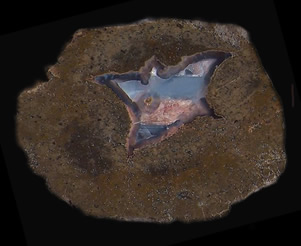
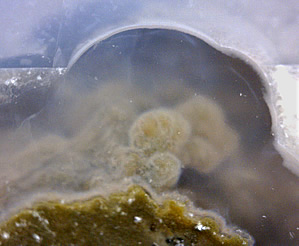
click on images
for larger views
AG11-15 Agate ex J. Höppner with label $26 SOLD
Am Piel, Zwickau, Saxony, Germany
6.8 cm x 5.1 cm x 2.5 cm
Another of these odd Am Piel agates with a brown rind and blue & pink agate in the center. Some interesting features can be seen through the border of clear agate, as shown in the photo on the right. Comes with J. Höppner's painted wood base.
![]()
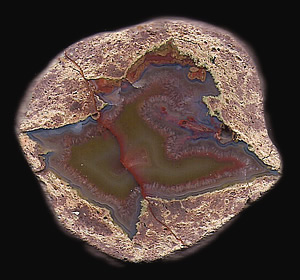
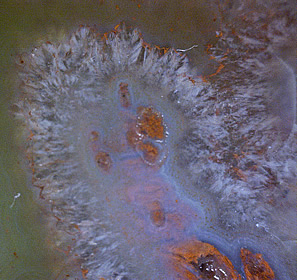
click on images
for larger views
AG11-8 Agate ex J. Höppner with label $44 SOLD
St Egidien, Glauchau, Saxony, Germany
7.2 cm x 6.8 cm x 2.7 cm
An unusual specimen with what looks like crystals inside the agate, parallel to the rind. Also, it is apparent that the red color entered the agate through a crack to the outside. Normally, agates from St Egidien are predominantly red, so this one has unusual coloring for a St Egidien, with extensive blue and green features.
![]()
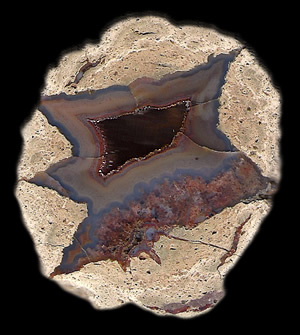
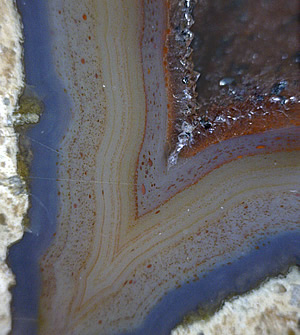
click on images
for larger views
AG11-9 Agate with Quartz ex J. Höppner with label $48 SOLD
St Egidien, Glauchau, Saxony, Germany
8.0 cm x 6.6 cm x 3.2 cm
Another agate with unusual blue-green coloring for a St Egidien, plus a central cavity with Quartz crystals.
![]()
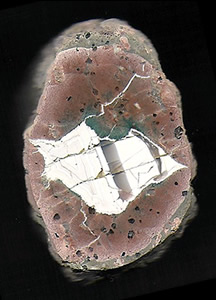
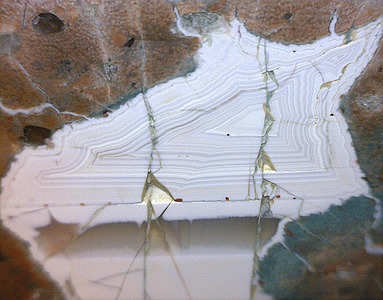
click on images
for larger views
AG11-13 Agate in Rhyolite ex J. Höppner with label $28 SOLD
Spießberg, SW of Heuberghaus, Friedrichroda-Kleinschmalkalden, Thuringian Forest, Thuringia, Germany
5.6 cm x 3.6 cm x 2.2 cm
This small piece is one of my favorites - half of the opaque white agate forms concentric triangles, while the other half is divided by clear, colorless agate. All of this is framed by green and pink rhyolite.
![]()
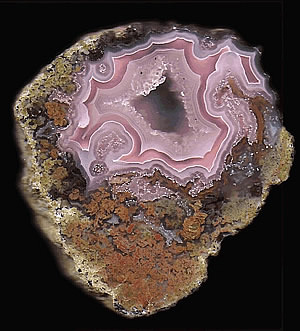

Left
Half, AG11-24L, $70 click
on images for larger views Right
Half, AG11-24R, $80
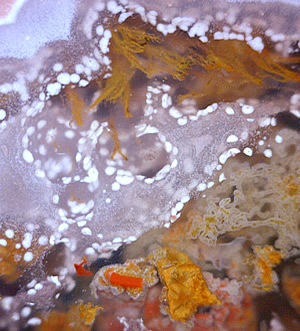
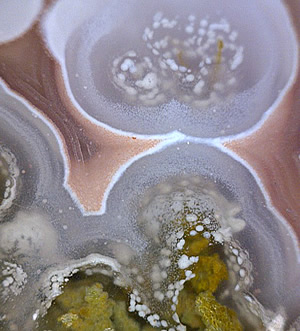
Left Half, AG11-24L, $70 click
on images for larger views Right
Half, AG11-24R, $80
AG11-24 Agate and Quartz, both halves $135 SOLD
Rancho Agua Nueva (an hour north of Chihuahua City), Chihuahua, Mexico
Left
half: 7.3 cm x 7.0 cm x 1.8 cm $70 SOLD
Right half: 7.6 cm x 7.0 cm x 2.4 cm $80 SOLD
This beautiful agate has a center cavity lined with sparkling Quartz crystals, surrounded by pink and lavender banded agate, speckled with white dots and framed by olive green to red to black mossy inclusions. The right half has a very pretty "eye". The white dots and mossy inclusions are shown in the closeups on the bottom.
![]()
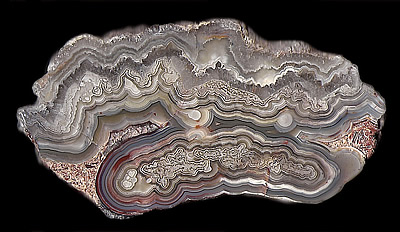

click
on images for larger views
AG11-31 Crazy Lace Agate $65 SOLD
Sierra Santa Lucia, Ejido Benito Juarez, Mun. de Ahumada, Chihuahua,
Mexico
12.3 cm x 6.3 cm x 2.4 cm
Crazy Lace Agate is named for the intricate, lacy patterns of banding that resemble lace. Most Crazy Lace forms in seams and is broken up by explosives, and thus does not have the nicely rounded, nodular form with complete patterns that this large piece possesses - even the back is complete and rounded. The dense banding goes deeply into the agate, much more so than the photos can show.
![]()
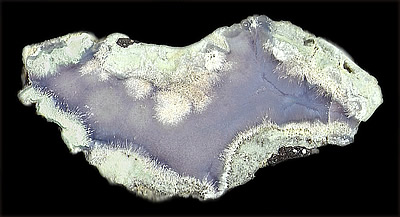
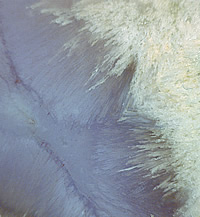
click
on images for larger views
AG11-26 Agate with (?)Natrolite/Mesolite $75 SOLD
Sheep's Bridge, Verde River, about 25 miles NE of Cave Creek, Verde
Mts, Maricopa Co., Arizona
11.3 cm x 6.0 cm x 2.5 cm
This unique and beautiful lavender agate is surrounded by and has inclusions of a white acicular mineral and a light green rind. Any acicular mineral appearing as this one does is commonly called "sagenite" by agate collectors, although the term does not mean a variety of Rutile (as mineral collectors use it to mean). Jeffrey Anderson (you can use Google to find his Dwarves' Earth Treasures website), the most knowledgeable agate collector I know, has written about these that "the cavities in the basalt beds have been completely lined with natrolite/mesolite and usually capped with calcite before they have been replaced and preserved by agate and quartz".
![]()


click on images for larger views
AG11-28 Jasper (microcrystalline
Quartz/Chalcedony) nodule
$75 SOLD
Cairo, Al Qahirah Governorate, Egypt
7.3 cm x 5.4 cm x 2.2 cm
This
wonderfully geometric Jasper nodule features some manganese dendrites,
which in closeup, look like scenery done in stained glass. Jasper
is a dense, opaque, microcrystalline variety of Quartz/Chalcedony,
colored red/brown/yellow from iron oxides. It is definitely
an eye-catching piece which contrasts extremely well with other agates
in a display case, and the locality is otherwise hard to get. I
have been using one of these each year in my competition geodes and
nodules case.
![]()
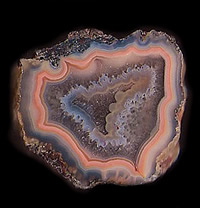
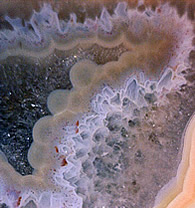

Left
Half, AG11-30L, $35 click
on images for larger views Right
Half, AG11-30R, $30
AG11-30
Agate and Quartz, both halves $58 SOLD
near Ngabu township, Chikwawa District, Malawi
Left
half: 3.3 cm x 3.2 cm x 2.3 cm $35 SOLD
Right half: 3.2 cm x 3.4 cm x 1.6 cm $30 SOLD
This pair of small agates is unusually bright and colorful for Malawi. The left half displays a side view of the heavily cratered lavender object (see middle photo) and the right half has bisected a fine peach-colored eye. A really nice little pair from a relatively rare location for an avid agate collector.
![]()
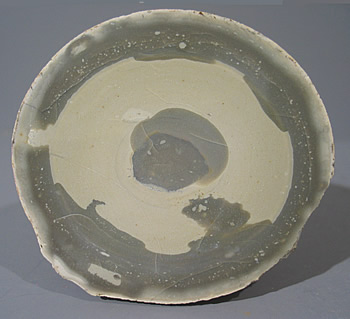
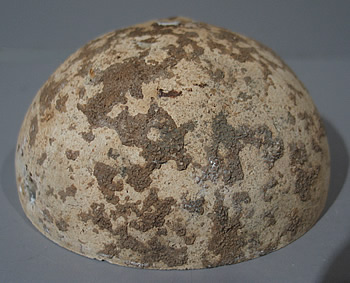
click on images
for larger views
GEO10-15 Agate
nodule $45 SOLD
ex Linda St-Cyr collection
Germany
9.4 cm x 9.0 cm x 4.4 cm
This bizarre, large Agate half-nodule looks like a big eye. It will definitely attract attention to any display shelf. I have a similar one in my competition case, and had a hard time deciding which one to keep.
![]()
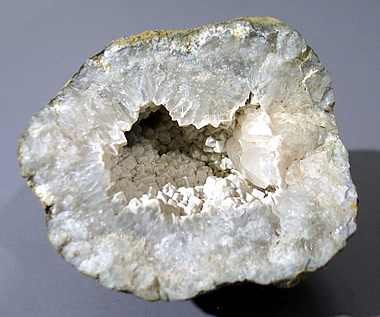
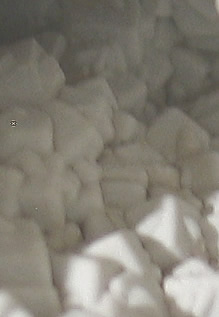
regular
light click
on images for larger views regular
light
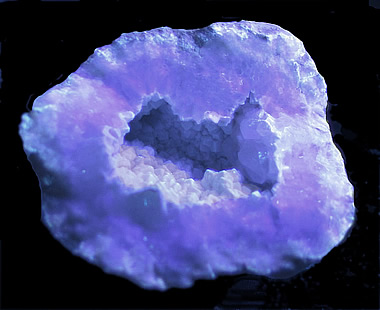
SWUV click
on image for larger view SWUV
GEO10-25
Geode with Calcite and Chalcedony over Quartz $25
ex Linda St-Cyr collection SOLD
Keokuk, Lee Co., Iowa
6.8 cm x 5.6 cm x 4.0 cm
The outer rind is Calcite, followed by tightly packed Quartz crystals that are coated with Chalcedony. (Oddly, the coated tips look like a layer of almost cubic crystals - look at the photo on the top right). Finally, a few Calcites are visible to the right hand side of the geode hollow. The Calcites fluoresce slightly pink and the Chalcedony fluoresces white-yellow under SWUV.
![]()
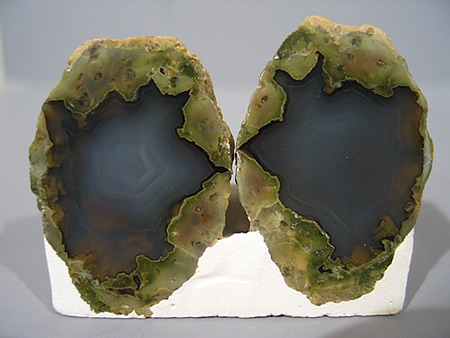
click on image
for larger view
GEO10-34
Agate, pair mounted in plaster $35 SOLD
ex collection of C. Gustafson of Inglewood, California
ex Linda St-Cyr collection
Newberry, San Bernardino Co., California
6.4 cm x 4.5 cm x 2.3 cm = dimensions of the mounted pair
This peculiar pair looks somewhat like a thunderegg on the top half due to the Agate having star-like points, but the bottom half doesn't have the pointed features. The green rind seems to have been permeated by the Agate material, and there is only a small patch of paler tan rind on top, possibly indicating a lot of weathering.
![]()
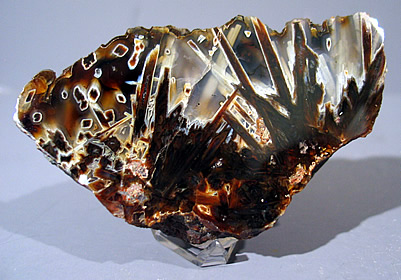
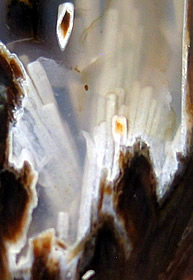
click on images
for larger views
GEO10-16 Agate
Nodule with Pseudomorphs of (?)Laumontite $125
ex Linda St-Cyr collection SOLD
Chubuk,
north of Ankara, Ankara Province, Central Anatolia Region, Turkey
9.5 cm x 5.5 cm x 3.0 cm
This striking Agate half-nodule contains clear pseudomorphs, some people say after Laumontite, others say after Anhydrite. The good pseudomorphs are highly prized due to their rarity. The Agates from Chubuk are said to be Thunderegg cores remaining after the rinds have been weathered away. These cores are found deep in clay resulting from decomposed rhyolitic lava.
![]()
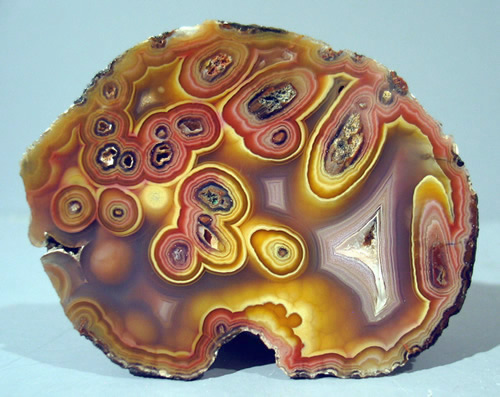
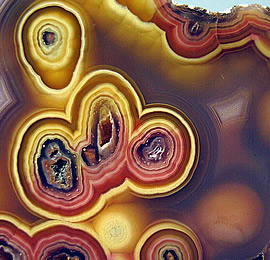
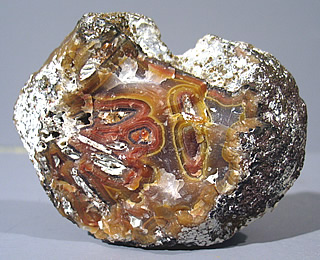
click on images
for larger views
GEO10-18 Agate
Nodule $650 SOLD
ex Linda St-Cyr collection
Rancho Coyamito, Sierra del Gallego, Mun. de Ahumada,
Chihuahua, Mexico
9.5 cm x 7.3 cm x 1.9 cm
Finger-like projections of yellow and red Chalcedony reach up through the depths to breach the surface. Purplish angular features and mounds of yellow Chalcedony on the walls contrast with the banded circles. This large, attention-grabbing Agate nodule was in my geode-nodule case when it received first place 4 times at the San Diego County Fair. It is the best Agate I have ever owned.
![]()
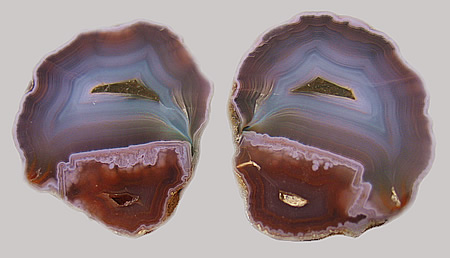

click on images
for larger views
GEO10-19 Agate
Pseudomorph Pair, $85 for both or $48 each SOLD
ex Linda St-Cyr collection
Rancho Coyamito, Sierra del Gallego, Mun. de Ahumada,
Chihuahua, Mexico
Left half: 4.3 cm x 3.8 cm x 1.7 cm, $48
Right half: 4.6 cm x 3.7 cm x 2.3 cm, $48
The Rancho Coyamito Agates are famous for their pseudomorphs of Aragonite, but the 90-degree angles (look at the bottom 1/3 on each Agate) on this pair are wrong for Aragonite. I'm thinking maybe Halite? Whatever the mineral originally was, it left a fascinating pseudomorph. I used one of the halves in my first-place-winning geode-nodule case for a couple of years.
![]()
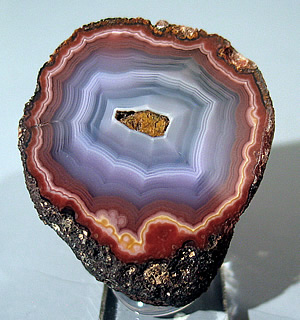
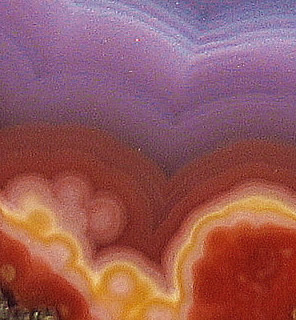
click on images
for larger views
GEO10-20 Agate
Nodule $36 SOLD
ex Linda St-Cyr collection
Rancho Coyamito, Sierra del Gallego, Mun. de Ahumada,
Chihuahua, Mexico
4.9 cm x 4.3 cm x 3.2 cm
This nodule has fine banding, striking colors, and some curious yellow, non-Agate material in the center.
![]()
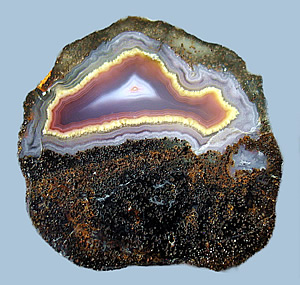

click on left
image for larger view
GEO10-21 Agate
Nodule $32 SOLD
ex Linda St-Cyr collection
Rancho Coyamito, Sierra del Gallego, Mun. de Ahumada,
Chihuahua, Mexico
4.7 cm x 4.7 cm x 1.7 cm
What is unique about this Agate is that half of its polished face is rind material. I think what must have happened is that the silica solution permeated the porous rind material, preserving it as part of the Agate.
![]()

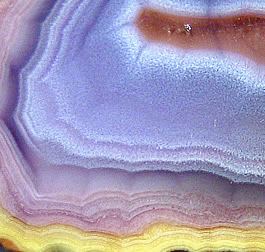
click
on images for larger views
GEO10-22 Agate
Nodule $28 SOLD
ex Linda St-Cyr collection
Rancho Coyamito, Sierra del Gallego, Mun. de Ahumada,
Chihuahua, Mexico
4.2 cm x 3.4 cm x 1.2 cm
I used this Agate half in my first-place-winning geode-nodule case to give it some yellow and lavender. What appears to be a crack at the top is actually under the polished surface, and it looks like a flow channel.
![]()
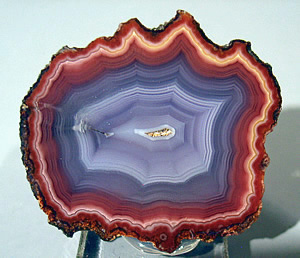
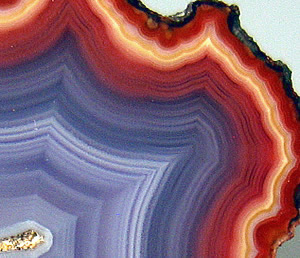 click
on images
for larger views
click
on images
for larger views
GEO10-23 Agate Nodule ex Linda St-Cyr collection SOLD
Rancho Coyamito, Sierra del Gallego, Mun. de Ahumada,
Chihuahua, Mexico
4.1 cm x 3.7 cm x 1.0 cm
This Agate half-nodule has fine contrasting colors, an interesting flow-feature to the left of center, and some curious, grainy material in the very center ring.
![]()
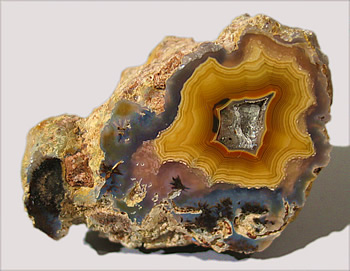
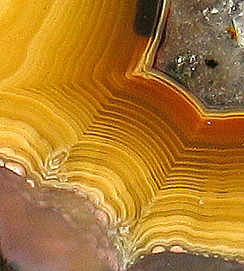
click
on images for larger views
GEO10-24 Agate
Nodule $32 SOLD
ex Linda St-Cyr collection
Moctezuma, Mun. de Moctezuma, Sonora, Mexico
5.3 cm x 3.9 cm x 3.1 cm
I've used this nodule in my first-place winning, geode-nodule case at the San Diego County Fair because it has a such a bright yellow color and fine banding. There are also a few dark, feathery plumes outside the yellow bands.
![]()
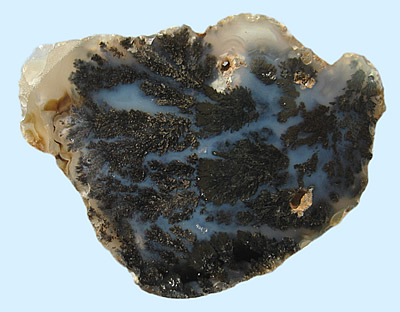
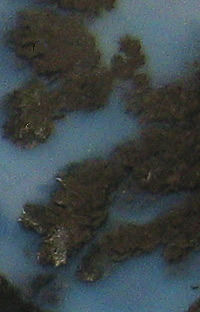
regular
light click
on images for larger views regular
light
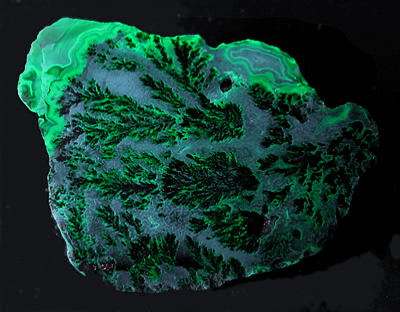
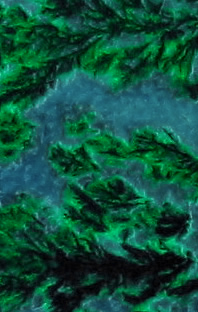
SWUV click
on images for larger views SWUV
GEO10-28
Agate variety "Marfa Plume Agate" $95
ex Linda St-Cyr collection SOLD
South of Marfa, Presidio Co., Texas
8.7 cm x 6.5 cm x 2.8 cm
These Agates are found along roadcuts and are prized for their unusual brown plumes and blue colors. This Agate half-nodule has especially attractive dark brown plumes embedded in a cloud of blue. Under SWUV, portions fluoresce green. What appears to be fluorescing blue in the lower photos, however, is just showing some reflection from the SWUV.
![]()
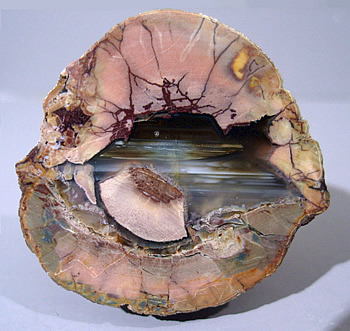

click on image
for larger view
GEO10-38
Agate in Rhyolite Nodule $28
ex Linda St-Cyr collection SOLD
Madagascar
6.5 cm x 6.3 cm x 2.5 cm
This nodule has colors like a Roger Dean painting, which it why it has always been my favorite. Also, notice the horizontally banded Agate, and a broken piece of the Rhyolite rind floating in the Agate.
![]()
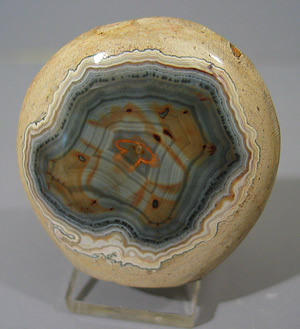
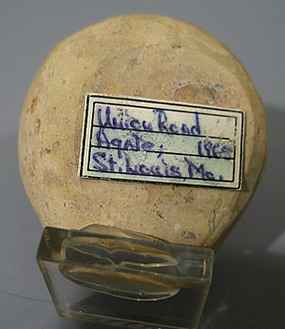
click on images
for larger views
GEO10-08
Agate in Chert, variety "Union Road Agate" $85
ex Linda St-Cyr collection SOLD
Interstate 270 and 55 exchange, St. Louis, St. Louis Co., Missouri
4.4 cm x 4.2 cm x 2.1 cm
The exterior of this specimen has been shaped and the display face is rounded. The pattern is very complex, winding around spots of what looks like Pyrite. There is a label on the back stating that it was found in 1965, and an old price tag of $100 on the bottom. Union Road Agates occur in heavily weathered chert. Weathered Agates tend to have many cracks due to cycles of freezing, but this Agate is perfect - no cracks.
![]()
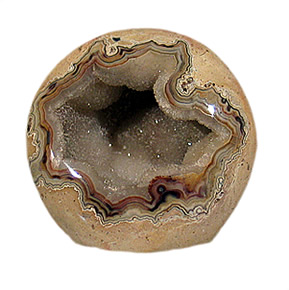
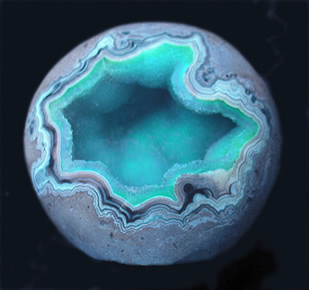
regular light
click
on images for larger views SWUV
light
GEO10-07
Agate & Quartz in Chert, variety "Union Road Agate" $85
ex Linda St-Cyr collection SOLD
Interstate 270 and 55 exchange, St. Louis, St. Louis Co., Missouri
5.0 cm x 4.9 cm x 3.5 cm
Moving 300 kilometers further south along the great Mississippi River, we come to the city of St. Louis. Just south of the city is the Interstate 270 and 55 exchange where "Union Road Agates" were found in the 1960's. The location is now developed and not available for collecting. This specimen has a label on the back stating that it was found in 1966. The exterior has been shaped, the display face is rounded, and the center is a hollow with drusy Quartz. Surrounding the Quartz are delicate pastel lines in Agate (cryptocrystaline, banded Quartz), grading to pink and almost purple in one part. The Quartz in the vug fluoresces green in SWUV.
![]()
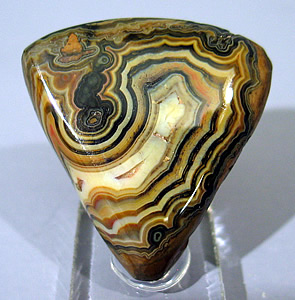
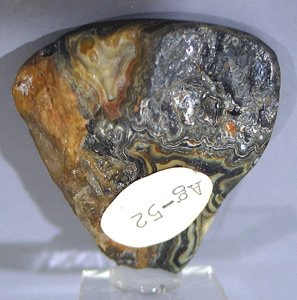
click on images
for larger views
GEO10-09
Agate variety "Union Road Agate" $36
ex Linda St-Cyr collection SOLD
Interstate 270 and 55 exchange, St. Louis, St. Louis Co., Missouri
4.0 cm x 3.8 cm x 1.5 cm
Agates are assumed to have formed in much the same way as geodes, by delayed filling of cavities in sedimentary or volcanic areas. The banding is either a product of repeated influx, or else the solution deposits the bands one at a time as the solution's chemical balance changes - both mechanisms seem to occur. This specimen is a perfect piece of Union Road Agate shaped to a rounded triangle.
![]()
Galleries
of Sold Specimens:
A
B C D E F G H I
J K L M N O P Q R S T
U V W
XY
Z
Agates Sold Calcites Sold Mont St-Hilaire Sold
![]()
Questions? Please send me an email.
Home | Mineral Galleries | Index of Minerals | Contact | Links | Orders
© 2008 - 2009 Middle Earth Minerals
